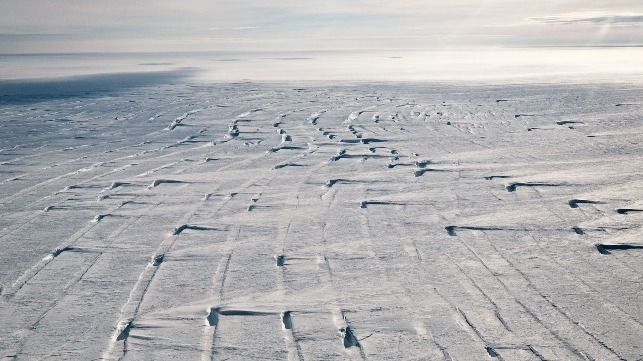Study: Antarctic Ice Loss Has Accelerated

In a study published in Nature on Wednesday, a joint European Space Agency / NASA research group reported that Antarctica is shedding ice into the ocean three to four times as fast as it did in the early 1990s. On balance, the Antarctic ice sheet is now releasing more than 200 billion tons of water every year, enough to raise sea levels by 0.5 mm annually, and the loss rate may continue to accelerate. Sea levels are presently rising at roughly three mm per year overall.
Most of the incease is coming from the floating West Antarctic ice sheet, which is warmed from below as ocean temperatures rise. Just two glaciers in this sheet, Thwaites and Pine Island, now contribute about half of Antartica's annual ice mass loss, according to the study's authors.
"[The sea is] about half a degree Celsius warmer than the continent can withstand and it's melting about five meters of ice from its base each year, and that's what's triggering the sea-level contribution that we're seeing," lead author Prof. Andrew Shepherd told BBC News.
The East Antarctic sheet is much larger, but has historically been less active, and data suggests modest growth in the range of five billion tonnes per year (with high uncertainty) over the length of the study.
To arrive at their conclusions, researchers with the Ice Sheet Mass Balance Inter-Comparison Exercise (IMBIE) analyzed two dozen independent studies of ice sheet mass changes conducted between 1992 and 2017, including results from three unrelated measurement methods. Averages were used to compute best estimates of ice sheet mass loss over five-year intervals.
Based on these calculations, the five-year average rose from about 50 billion tons per year in the early 1990s to 220 billion tons per year in 2012-2017 (with uncertainty of 67 and 43 gt/year respectively). The net mass loss over the entire 25-year period was assessed at roughly 2.7 trillion tons, equivalent to roughly 700 cubic miles of ice.
Diverging paths
In a separate study published in the same edition of Nature, an interdisciplinary group of researchers examined two scenarios for Antarctica over the course of the next 50 years. In the first, greenhouse gas emissions continue to rise, and in the second, strong action is taken to limit emissions and to manage increased human use of Antarctica.
In the high emissions scenario, the researchers found, by 2070 major ice shelves have collapsed, sea level rise has accelerated, and ocean acidification and over-fishing have altered Southern Ocean ecosystems. In the low emissions narrative, Antarctica in 2070 looks similar to its current state: the ice shelves remain intact, Antarctica makes a small contribution to sea level rise, and the continent remains a "natural reserve, dedicated to peace and science" as agreed by Antarctic nations in the late 20th century.
"The message from this work is clear," said co-author Professor Steven Chown, the president of the Scientific Committee on Antarctic Research. "Global sustainability depends on a rapidly closing window of opportunity. If we take action now, to limit greenhouse gas emissions, Antarctic environments will remain much as we have come to know them over the past 200 years. If we do not, they will change dramatically, and through their connections to the rest of the Earth System, result in global impacts with irreversible consequences."
